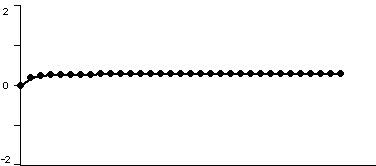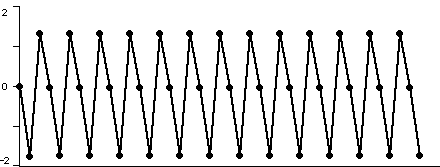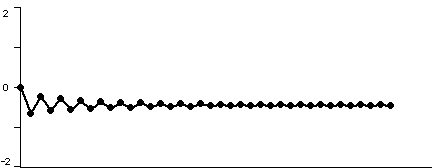Editorial
- Happy birthday Plus! — celebrating 10 years of bringing mathematics to life
- Plus 10 — what were the greatest mathematical advances in the last decade?
This issue of Plus is devoted to the winning entries of the Plus New Writers Award 2006.
Learn about the aerodynamics of footballs and perfect your free kick.

This plot shows the orbit of zero for iteration of x2 + 0.2 . You can see that after some iterations the points in the orbits remain almost the same.

This plot shows the orbit of zero for iteration of x2 - 1.85. The orbit does not settle down, it is chaotic.

This plot shows the orbit of zero for iteration of x2 - 1.8. Even though the orbit is close to a 3-cycle for periods of time, it never settles down completely. It is chaotic.

This plot shows the orbit of zero for iteration of x2 - 1.75. It tends to a cycle of period 3.

This plot shows the orbit of zero for iteration of x2 - 1.6. The orbit does not settle down, it is chaotic.

This plot shows the orbit of 0 for iteration of x2 - 0.65 . You can see that after some iterations the points in the orbits remain almost the same.
To work out the filled Julia set of x2 + 0 = x2 we need to look at all the points on the complex plane and decide whether or not their orbits escape to infinity. Those whose orbit doesn't escape are part of the filled Julia set.
Complex numbers are based on the number i which is defined to be the square root of -1, so i times i equals -1. This number isn't a real number, in other words it does not appear on the usual number line. For this reason it is called an imaginary number, a slightly contentious name. Now any complex number is of the form a + ib, where a and b are ordinary real numbers.